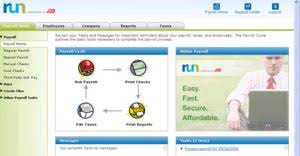Warning: sprintf() expects at least 1 parameter, 0 given in /var/www/vhosts/customer/tarlikov.kz/vizatur.org/wp-content/themes/twentysixteen/template-parts/content.php on line 32
Think about renegotiating with suppliers for better deals, making your logistics more efficient, and finding cheaper tech solutions. Cutting down on unnecessary spending lets you put more money back into your business. As a steadfast advocate for small business success, my mission is to pave the way for a new generation of innovative and driven entrepreneurs who are ready to make their mark on the world. Tools + Intel by CRC Group covers a wide range of industry issues to keep you and your clients informed.
- Unlike retail, which deals directly with consumers, wholesale transactions focus on bulk distribution at lower per-unit costs.
- Plus, we provide in-depth training to help you and your staff quickly master the new features.
- It is this understanding that gives us a competitive advantage and allows us to best serve other SMBs in the wholesale and distribution industry.
- Look for a CPA firm that has extensive experience in working with wholesale distribution businesses.
- Sign up with FreshBooks accounting software to save an average of 16 hours each month.
Xero – Best for expanding wholesale companies
It has five different plans to take you through from one phase of business to another. Generally, Quickbooks is best to use if you, or someone within your company, already has a basic framework of accounting knowledge. The best wholesale accounting software right now is ProfitBooks and ZarMoney. It takes a lot of time and effort for a company to calculate the taxes to be paid.
Smart Inbox, Smart Business
Automate your business processes, boost productivity, and drive growth with ease. Explore Versa solutions tailored to meet the demands of your modern business. You can now customize your FreshBooks experience with a range of business-friendly apps. Take control of your business accounting with the help of these integrations.
Versa Cloud ERP – Top Cloud Accounting Solutions for Wholesalers
Our experts effectively estimate accurate taxes so that our clients can concentrate on their core part without worrying about the complications of taxes. Get the latest insights and strategies on inventory management, supply chain optimization, and operational delivered straight to your inbox. Strong internal controls are essential for preventing fraud and ensuring accurate financial reporting. By enhancing financial reporting and analysis capabilities, wholesalers can typically improve decision-making accuracy by 15-20%, leading to better resource allocation and strategic planning. Accurate cost accounting is essential for maintaining profitability in the competitive wholesale industry.
Costco Wholesale Accounting Division — Open Positions
Let’s explore the best accounting software, inventory management tips, and how to keep your financial records precise. Zoho Books is a cloud-based accounting software that provides features such as invoicing, expense tracking, and inventory management. It is aimed at small businesses and includes integrations with various other business tools. Accounting software is an essential wholesale accounting tool for businesses of all sizes, but it is especially important for wholesale businesses and distributors. With the correct accounting software, a business can simply track its spending, manage its inventory accurately, and maintain good financial order. In this article, we will review the seven best accounting software solutions for wholesale businesses and distributors.
- With award-winning customer service, help is always just a quick email or phone call away.
- Now, you won’t have to worry about the hassles of spreadsheets and hiring additional finance staff.
- Our team of professionals always goes through a candidate screening process that helps us in having only the best candidates on board who can easily understand the unique needs of our clients.
- We are here to efficiently solve all your complex accounting and bookkeeping problems easily and rapidly.
- Blue Link ERP is an owner-managed SMB and so we understand the business mindset of other SMBs.
- Built from the ground up to be the best in the industry, Sage Intacct offers top-tier software for wholesale distribution.
- Use demand forecasting tools to analyze historical sales patterns, factoring in variables like seasonality, promotions, and market trends.
- They should take the time to understand your specific goals, challenges, and industry dynamics.
- Our experts are ready to show you how Versa can address your specific needs and challenges.
- Sit back, relax, and let’s dive into the world of wholesale and distribution accounting.
- In price-sensitive industries like consumer electronics, wholesalers often use tiered pricing models, offering lower rates for larger orders.
- FreshBooks makes it easier to collect every dollar owed to your business.
So, don’t underestimate the importance of choosing the right CPA for your wholesale and distribution business. A skilled CPA team can help you navigate the unique challenges of the industry, optimize your financial operations, and ultimately drive profitability. This will enable them to provide you with real-time financial data, automate repetitive tasks, and improve the accuracy and efficiency of your financial operations. By having accurate and up-to-date financial records, you can make informed decisions, identify areas for improvement, and maximize your profitability. The accounting software for distribution packages starts as low as $15 a month.
- Managing cash and its inflow is essential and a priority for any industry.
- We want you to understand the importance of choosing the right CPA for your business.
- For manufacturers, distributors, and e-commerce businesses, Versa Cloud ERP offers a unified platform that connects all aspects of operations – from purchase to payment, quote to cash.
- By optimizing both accounts receivable and payable processes, wholesalers can reduce their cash conversion cycle by 20-30%, freeing up working capital for strategic investments.
- Below are ten accounting software solutions to simplify your bookkeeping process.
- This will enable them to provide you with real-time financial data, automate repetitive tasks, and improve the accuracy and efficiency of your financial operations.
They should take the time to understand your specific goals, challenges, and industry dynamics. Let’s explore how to choose the right CPA for your business and how the right pros can help you achieve financial success. Sit back, relax, and let’s dive into the world of wholesale and distribution accounting. Managing inventory well improves efficiency, profits, and customer satisfaction. For more on best practices, check out guides from wholesale inventory management resources.






